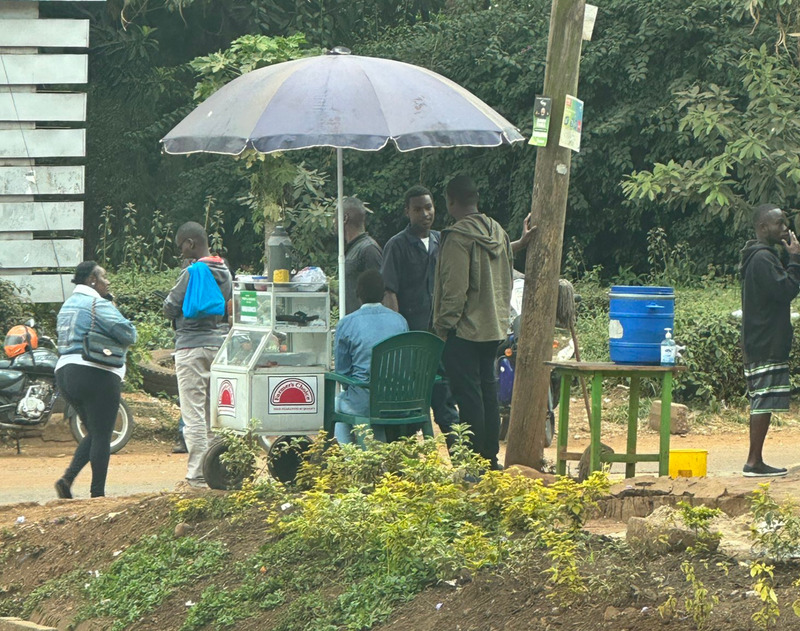Common pitfalls: Seven mistakes new plant owners often make

While nurturing plants can be rewarding, beginners often face challenges that can lead to plant stress or even death.
As more people embrace indoor gardening and plant care as a hobby, many new plant owners are eager to bring greenery into their homes.
While nurturing plants can be rewarding, beginners often face challenges that can lead to plant stress or even death.
More To Read
- As August temperatures drop, here is why you need a sauna or steam bath
- How to make irresistible caramel popcorn using a sufuria
- Study shows physical exercise can greatly reduce cancer recurrence
- 5 things making your home look cluttered, and how to fix them
- How to make homemade body scrub with basic ingredients
- Is it okay to boil water more than once, or should you empty the kettle every time?
Experts highlight seven common mistakes that new plant enthusiasts frequently make, and understanding these can help ensure healthier, longer-lasting plants.
Overwatering
One of the most common errors is overwatering.
Many new plant owners assume that more water means healthier plants, but excessive watering can suffocate roots and promote fungal diseases.
In fact, experts recommend checking soil moisture before watering and ensuring pots have proper drainage.
Ensuring your plant has proper drainage is crucial for preventing water from accumulating at the bottom of the pot, which can lead to root rot. This starts with choosing a pot that has one or more holes at the bottom to allow excess water to escape.
If the decorative pot you love does not have drainage, you can either drill holes yourself or use it as a cover pot, placing your plant in a smaller, drainable nursery pot inside it.
It is also helpful to add a layer of small stones or gravel at the bottom of the pot to improve drainage, although this should not replace proper holes.
Always empty any water that collects in saucers or trays beneath the pot to avoid oversaturation.
Light direction matters
Another mistake is poor light management.
Plants have varying light requirements; some thrive in bright, direct sunlight, while others prefer indirect or low light.
It is important to do a little bit of research before you decide to get a plant.
Ensure, before you go to get that plant, that you have a rough idea of the plant and where you can place it.
Placing a plant in the wrong lighting conditions can stunt growth or cause leaf damage.
Yet many people see the leaves discolour and assume the leaf needs more water.
If you are a beginner, ensure you research each plant’s specific light needs to find the ideal spot in their home.
The type of soil matters
Neglecting proper soil and pot selection also hampers plant health. Using garden soil or pots without drainage holes can lead to waterlogging and root rot.
Specialised potting mixes designed for indoor plants and containers with drainage are essential to provide the right environment for healthy root growth.
Unlike regular garden soil, these mixes are formulated to offer excellent air circulation, moisture retention, and nutrient balance, which are critical for container plants that have limited space for root expansion.
Good drainage prevents water from pooling at the bottom of the pot, reducing the risk of root rot and fungal diseases.
Using a well-draining potting mix combined with pots that have drainage holes ensures excess water escapes easily, creating an optimal balance of moisture and airflow that keeps plants thriving indoors.
Check your humidity level
A fourth common misstep is ignoring humidity levels. Many tropical plants require higher humidity, which is often lacking in typical indoor environments.
Without adequate humidity, plants may develop brown leaf edges or drop leaves prematurely.
Solutions include misting, using humidity trays, or placing plants near humidifiers.
Fertiliser use
Overfertilizing is another frequent issue. While fertiliser supports growth, too much can burn roots or cause excessive, weak foliage.
Beginners should follow recommended feeding schedules and dilute fertilisers as advised.
Additionally, improper pruning and neglecting pest control can reduce plant vitality.
Removing dead or damaged leaves encourages healthy growth, while unchecked pests like spider mites or aphids can quickly spread and harm plants.
Finally, it is important to note that being a plant mom requires patience.
The lack of patience often leads to frustration, and plants take time to adapt and grow.
Rushing the process or frequently moving plants can stress them.
Understanding and avoiding these common mistakes can help new plant owners foster a thriving indoor garden.
With proper care, patience, and attention to their plants’ unique needs, beginners can enjoy the many benefits of indoor greenery, from improved air quality to enhanced mental well-being
Top Stories Today













































